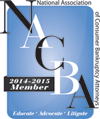
Mortgage Modifications Success & Failure
A new report released in January 2013 from the NCLC reveals both the successes and failures of mortgage modification programs used by top mortgage lenders and servicers.
As many as ten million homes are still estimated to be at high risk of foreclosure.
With nearly four million foreclosures having been completed between 2007 and 2012.
The report looks at the track record of the Home Affordable Modification Program, created in 2009 to address the need for mortgage modifications by defaulting homeowners.
NCLC found that while HAMP had successfully modified many mortgage loans, massive lender noncompliance had prevented the program from helping all the homeowners it could.
In particular, NCLC said lenders violated HAMP by continuing foreclosures without first:
- evaluating homeowners’ eligibility for modification;
- mistakenly or falsely claiming investor restrictions as the reason for denying a modification
- failing to provide required notices
As of October 2012 over 14.5 million homeowners were delinquent on their mortgage by more than 60 days.
Over 4.3 million homeowners had applied for a HAMP modification but only 1.1 million permanent modifications had been started.
NCLC found that they were still more successful then the non-HAMP modifications mortgage lenders and servicers are more likely to approve.
It’s not uncommon for a homeowner who applies for a HAMP modification to be told that while they don’t qualify for a HAMP modification, the lender or servicer has their own internal modification programs available.
In fact, the vast majority of mortgage modifications are not done through the HAMP program but through a lender or servicer’s own internal program.
HAMP Modifications vs. Non-HAMP Modifications
NCLC found a big difference between the HAMP modifications and the more common non-HAMP modifications.
Over 80% of HAMP modifications are still performing within one year of the modification and they are less likely to default again and lead to foreclosure.
But non-HAMP modifications that lenders and servicers push have re-default rates in the first year in excess of 35%.
Some of the reasons for these higher default rates for non-HAMP modifications include the fact that:
- there is no requirement that payments be affordable
- lenders may require large upfront payments
- homeowners actually lose equity in their homes through non-HAMP modifications.
For example, the report cited Chases’ internal modification program that extends the term of the loan before doing anything else, leading to tens of thousands of additional dollars in increased interest.
The report also found that, in contrast to popular belief, mortgage servicers have significant financial incentives to not approve modifications.
Servicers receive a lot of money from foreclosure fees and have little incentive to make modifications for homeowners.
HAMP is set to expire at the end of this year.
Since most lenders and servicers push homeowners into non-HAMP modifications anyway, its expiration may not be widely noticed.
Homeowners need to consider all alternatives to the mortgage modifications being offered by their lender or servicer.
Before agreeing to any mortgage modification contact us at Nancy L. Thompson Law Office, P.C.


